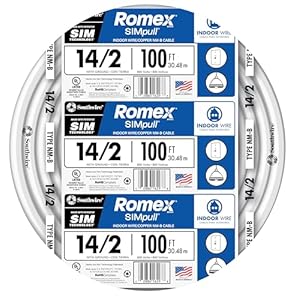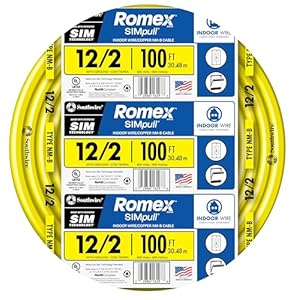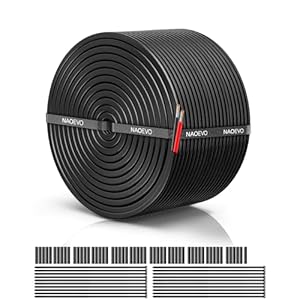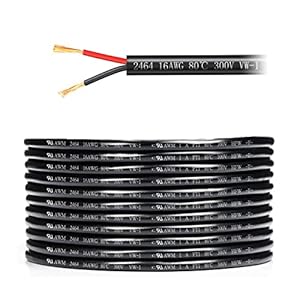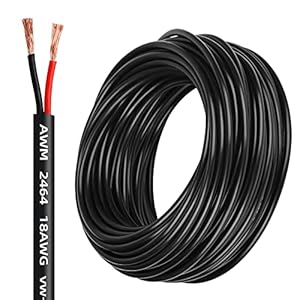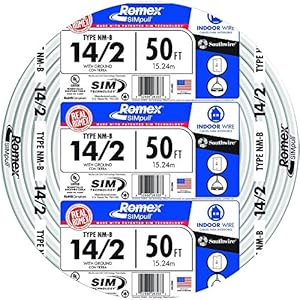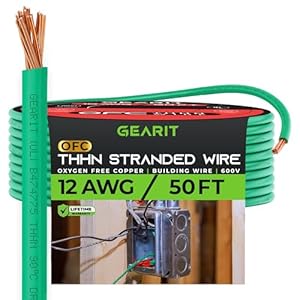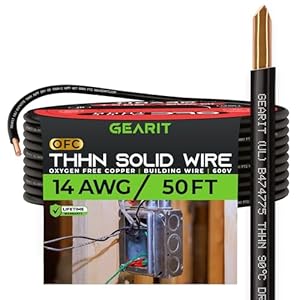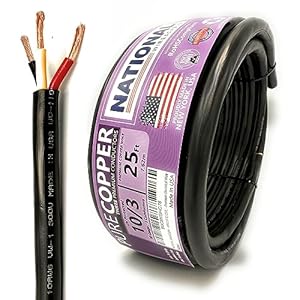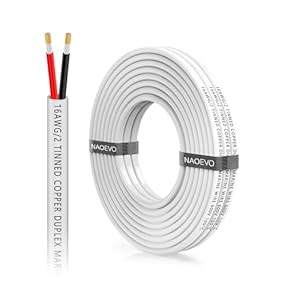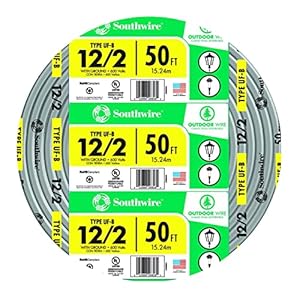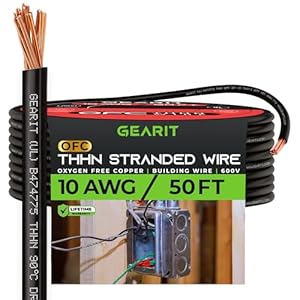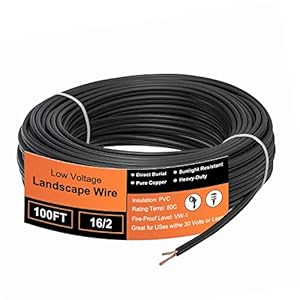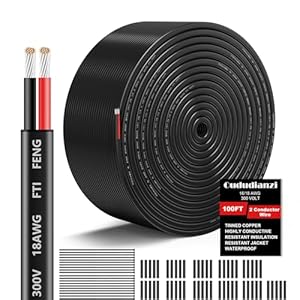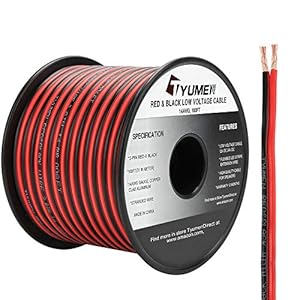Introduction to High Voltage Wires and Cables
High voltage wires and cables are essential components in the realm of modern electrical systems, playing a pivotal role in ensuring the efficient transmission and distribution of electrical power. These specialized cables are designed to handle significantly higher voltages compared to standard wiring, making them indispensable in various high-demand applications. Typically, high voltage cables are classified as those capable of operating at voltages exceeding 1,000 volts (1 kV) for alternating current (AC) systems, although specific classifications may vary depending on regional standards and technical specifications.
The importance of high voltage cables cannot be overstated. They serve as the backbone of electrical infrastructure, facilitating the transfer of electricity from power generation stations to substations and, ultimately, to end-users. Without these cables, the large-scale and long-distance transmission of electrical power would be impractical, if not impossible. This importance is underscored by their critical role in various industries, each with unique demands and applications.
In the power transmission sector, high voltage wires and cables are essential for connecting power plants to the grid, enabling the delivery of electricity over vast distances with minimal loss. Industrial machinery also relies heavily on these cables to ensure the smooth operation of high-power equipment, ranging from manufacturing plants to heavy-duty mining operations. Furthermore, the growing adoption of renewable energy systems, such as wind and solar power, has amplified the need for high voltage cables. These systems often generate power in remote locations, necessitating robust and efficient cables to transport electricity to urban centers and other areas of demand.
By understanding the fundamental aspects and applications of high voltage wires and cables, one can appreciate their vital role in both current and emerging technologies. As we continue to advance in areas like renewable energy and smart grids, the significance of these cables will only grow, further cementing their position as a cornerstone of modern electrical infrastructure.
Types of High Voltage Cables
High voltage cables are an essential component in the transmission and distribution of electrical power. They come in various types, each suited for specific applications and environments. The primary categories of high voltage cables include overhead lines, underground cables, and submarine cables. Understanding these types is crucial for selecting the right cable for your needs.
Overhead Lines
Overhead lines are the most common type of high voltage cable. They are typically supported by towers or poles and are used for long-distance power transmission. The construction of overhead lines involves conductors made of aluminum or aluminum alloys, which are chosen for their excellent conductivity and lightweight properties. These conductors are often reinforced with steel to enhance their mechanical strength. The primary advantage of overhead lines is their cost-effectiveness and ease of maintenance. However, they are susceptible to environmental factors such as weather conditions and physical obstructions, which can lead to outages and maintenance challenges.
Underground Cables
Underground cables are used in urban areas where space constraints or aesthetic considerations make overhead lines impractical. These cables are typically insulated with materials such as cross-linked polyethylene (XLPE) or ethylene propylene rubber (EPR), which provide excellent electrical and thermal properties. The construction of underground cables also includes metal sheaths and armor layers for mechanical protection. One of the main advantages of underground cables is their immunity to weather conditions, resulting in higher reliability and reduced maintenance. However, they are more expensive to install and repair compared to overhead lines, and their installation requires significant excavation work.
Submarine Cables
Submarine cables are designed for undersea applications, connecting power grids across continents or islands. These cables are constructed with robust insulation and armoring to withstand harsh underwater conditions, including high pressure, saltwater corrosion, and mechanical stresses from currents and marine life. Submarine cables often use materials like polyethylene and polypropylene for insulation, and they may be further protected by layers of steel wires. The primary advantage of submarine cables is their ability to transmit power over long distances without the visual impact of overhead lines. However, they are the most expensive to install and repair, requiring specialized equipment and expertise.
Each type of high voltage cable has its specific applications, benefits, and challenges. By understanding these factors, you can make informed decisions for your electrical power transmission and distribution needs.
Materials Used in High Voltage Cables
High voltage cables are critical components in the transmission and distribution of electrical power. The choice of materials used in their construction significantly influences their performance, durability, and safety. Key materials include conductors, insulation, and sheathing.
Conductors: The primary materials used for conductors in high voltage cables are copper and aluminum. Copper is favored for its superior electrical conductivity and excellent mechanical properties. It ensures minimal energy loss and efficient power transmission. Aluminum, although having slightly lower conductivity than copper, is lighter and more cost-effective, making it a viable alternative, especially for overhead power lines where weight reduction is crucial.
Insulation: Insulation materials are pivotal to preventing electrical discharges and ensuring safety. Cross-linked polyethylene (XLPE) and ethylene propylene rubber (EPR) are commonly used. XLPE is highly regarded for its excellent dielectric properties, thermal resistance, and mechanical strength. It is capable of withstanding high temperatures and ensuring long-term reliability. EPR, on the other hand, offers superior flexibility and resistance to water, making it suitable for various environmental conditions. Both materials provide robust insulation, reducing the risk of faults and enhancing cable longevity.
Sheathing: The outer sheathing of high voltage cables is designed to protect the internal components from environmental factors, mechanical damage, and chemical exposure. Common sheathing materials include polyvinyl chloride (PVC), polyethylene (PE), and thermoplastic elastomers (TPE). PVC is widely used due to its good mechanical properties, flame retardancy, and cost-effectiveness. PE offers excellent chemical resistance and durability, while TPE provides flexibility and resilience under harsh conditions.
The selection of these materials is driven by their inherent properties, which contribute to the overall performance and safety of high voltage cables. By ensuring optimal conductivity, insulation integrity, and protection, these materials play a crucial role in the reliable and efficient transmission of electrical power.
Design and Construction of High Voltage Cables
The design and construction of high voltage cables are critical to ensuring their reliability and performance. These cables are composed of several layers, each serving a distinct purpose in maintaining the cable’s integrity and functionality under high voltage conditions.
The core component of a high voltage cable is the conductor, typically made of copper or aluminum. The conductor is responsible for carrying the electrical current and is designed to minimize resistance and maximize conductivity. Surrounding the conductor is the insulation layer, which prevents electrical leakage and protects against short circuits. Common materials used for insulation include cross-linked polyethylene (XLPE) and ethylene propylene rubber (EPR), both known for their excellent dielectric properties and thermal stability.
Encasing the insulation is the shielding layer, which serves to contain the electric field within the cable and protect against external electromagnetic interference. This layer is often composed of semi-conductive materials or metallic tapes and wires. Additionally, a jacketing or protective layer encases the entire assembly, offering mechanical protection against environmental factors such as moisture, chemicals, and physical abrasion.
High voltage cables must adhere to stringent standards and specifications to ensure safety and performance. These standards are established by organizations such as the International Electrotechnical Commission (IEC), the Institute of Electrical and Electronics Engineers (IEEE), and national bodies like the American National Standards Institute (ANSI). Compliance with these standards ensures that the cables can withstand specified voltage levels, environmental conditions, and mechanical stresses over their operational lifespan.
In summary, the meticulous design and construction of high voltage cables, including the selection of appropriate materials and adherence to established standards, are vital for their safe and efficient operation. These cables play an essential role in the transmission of electrical power across vast distances, underpinning the reliability of modern power systems.
Installation Techniques and Best Practices
When installing high voltage cables, careful consideration of the installation techniques and best practices is essential to ensure both safety and efficiency. This section delves into the methodologies for both overhead and underground installations, detailing the necessary steps for each.
For overhead installations, site preparation is the first critical step. This involves clearing the installation area of any obstructions and ensuring that the terrain is suitable for pole placement. Poles should be securely anchored, and the high voltage wires must be tensioned appropriately to prevent sagging. During the laying process, it is crucial to maintain a safe distance from other utilities and to follow all regulatory guidelines to avoid any potential hazards.
Underground installations require a different approach. The site must be excavated to the appropriate depth, taking into account the soil type and potential impacts on the cable’s integrity. Trenching is a common method, where a trench is dug to lay the cables. Once the trench is prepared, ducts or conduits are often used to protect the cables from mechanical damage and environmental factors. After laying the cables, the trench is backfilled with suitable materials to ensure stability and protection.
Jointing and termination of high voltage cables are equally important. Proper jointing techniques are necessary to maintain the integrity and continuity of the electrical connection. This often involves using specialized materials and methods to ensure a secure and stable joint. Termination, on the other hand, requires careful attention to detail to prevent any potential electrical faults and to ensure a safe connection to the electrical system.
Safety precautions must always be a top priority during installation. This includes wearing appropriate personal protective equipment (PPE) and following all safety protocols. Additionally, compliance with regulatory standards is mandatory to ensure the installation meets all safety and performance requirements. Regular inspections and testing should be conducted throughout the installation process to identify and rectify any issues promptly.
Maintenance and Troubleshooting
Effective maintenance and troubleshooting of high voltage cables are critical to ensuring their longevity and reliability. Routine inspections and maintenance procedures are fundamental to the upkeep of these cables. Regular visual inspections should be conducted to identify any obvious signs of wear and tear, such as cracks or abrasions on the insulation. Additionally, thermal imaging can be employed to detect overheating that may indicate underlying issues.
Preventive maintenance should include periodic testing of the cable’s insulation resistance using a megohmmeter. This test helps in identifying potential insulation degradation before it leads to failure. Furthermore, partial discharge testing can be utilized to detect and locate weak spots within the cable insulation. It is also crucial to ensure that all cable accessories, such as connectors and terminations, are in good condition and properly installed.
Troubleshooting high voltage cables typically involves diagnosing common issues such as insulation failure, conductor breakage, and external damage. Insulation failure often manifests as a decrease in insulation resistance or unexpected electrical discharges. In such cases, the compromised section of the cable should be identified and replaced. Conductor breakage, which can result in power outages, may be located using time-domain reflectometry (TDR) or other advanced diagnostic tools.
External damage to high voltage cables, such as cuts or abrasions caused by environmental factors or mechanical impact, requires immediate attention. Such damage can be repaired using appropriate splicing and sealing techniques to restore the cable’s integrity. It is essential to use high-quality repair materials and follow manufacturer guidelines to ensure the repair is reliable and durable.
In conclusion, regular maintenance and prompt troubleshooting are vital to maintaining the functionality and safety of high voltage cables. By adhering to routine inspection procedures and employing effective diagnostic methods, potential issues can be identified and rectified before they escalate into significant problems.
Safety Considerations for High Voltage Cables
Safety is of utmost importance when dealing with high voltage cables. Exposure to high voltage electricity poses significant risks, including electrical shock, arc flash, and fire hazards. Therefore, understanding and implementing safety protocols is crucial for anyone working with or near high voltage cables.
Potential hazards associated with high voltage electricity include electrocution, which can result from direct contact with live wires or indirect contact through conductive materials. Arc flash, a sudden release of electrical energy through the air, can cause severe burns and injuries. Additionally, high voltage can lead to electrical fires, which pose risks to both personnel and property.
To mitigate these risks, several safety protocols must be followed. Firstly, always de-energize high voltage cables before performing any maintenance or repair work. Lockout and tagout (LOTO) procedures should be strictly adhered to, ensuring that the electrical source is isolated and cannot be accidentally re-energized. Secondly, maintain a safe distance from high voltage cables, as electricity can arc and travel through the air. Establishing safe working zones and using insulated tools can help minimize the risk of accidental contact.
Personal protective equipment (PPE) is essential for anyone working with high voltage cables. This includes insulated gloves, flame-resistant clothing, face shields, and dielectric footwear. PPE should be regularly inspected and maintained to ensure its effectiveness. Additionally, workers should be trained in proper usage and emergency response procedures.
Adhering to safety standards and regulations is critical. Organizations such as the Occupational Safety and Health Administration (OSHA) and the National Fire Protection Association (NFPA) provide guidelines and standards for electrical safety in the workplace. Compliance with these standards not only ensures the safety of personnel but also helps prevent costly accidents and legal liabilities.
In conclusion, prioritizing safety when dealing with high voltage cables is non-negotiable. By understanding the potential hazards, following safety protocols, utilizing appropriate PPE, and adhering to established safety standards, the risks associated with high voltage electricity can be effectively managed.
Future Trends and Innovations
The field of high voltage cables is undergoing significant transformations driven by advancements in materials, design improvements, and emerging technologies. One of the most notable trends is the development of new materials that offer superior conductivity and durability. These materials, such as high-temperature superconductors (HTS) and cross-linked polyethylene (XLPE), are being increasingly adopted for their ability to handle higher voltage levels while reducing transmission losses. HTS cables, for example, can carry up to ten times more power compared to conventional copper cables, making them an ideal choice for future high voltage applications.
Design improvements are also playing a crucial role in enhancing the efficiency and reliability of high voltage power transmission. Innovations such as compact design cables, which reduce the overall size and weight, and the use of advanced insulation materials are helping to improve the performance and longevity of high voltage cables. Additionally, the integration of smart monitoring systems within the cable design allows for real-time data collection and predictive maintenance, significantly reducing the risk of failures and downtime.
Emerging technologies, particularly those related to renewable energy sources, are shaping the future landscape of high voltage cables. The growing adoption of wind, solar, and other renewable energy sources necessitates the development of cables that can efficiently transmit power over long distances. High voltage direct current (HVDC) cables, known for their efficiency in long-distance power transmission, are becoming increasingly important in connecting renewable energy installations to the grid. Furthermore, the push for sustainable and smart grid solutions is driving the demand for high voltage cables that are not only efficient but also environmentally friendly.
In conclusion, the future of high voltage cables is poised for exciting advancements. With continuous improvements in materials, design, and technology, the industry is well-equipped to meet the challenges of modern power transmission. As renewable energy sources become more prevalent and the demand for sustainable solutions grows, high voltage cables will play a pivotal role in shaping a reliable and efficient energy infrastructure for the future.


